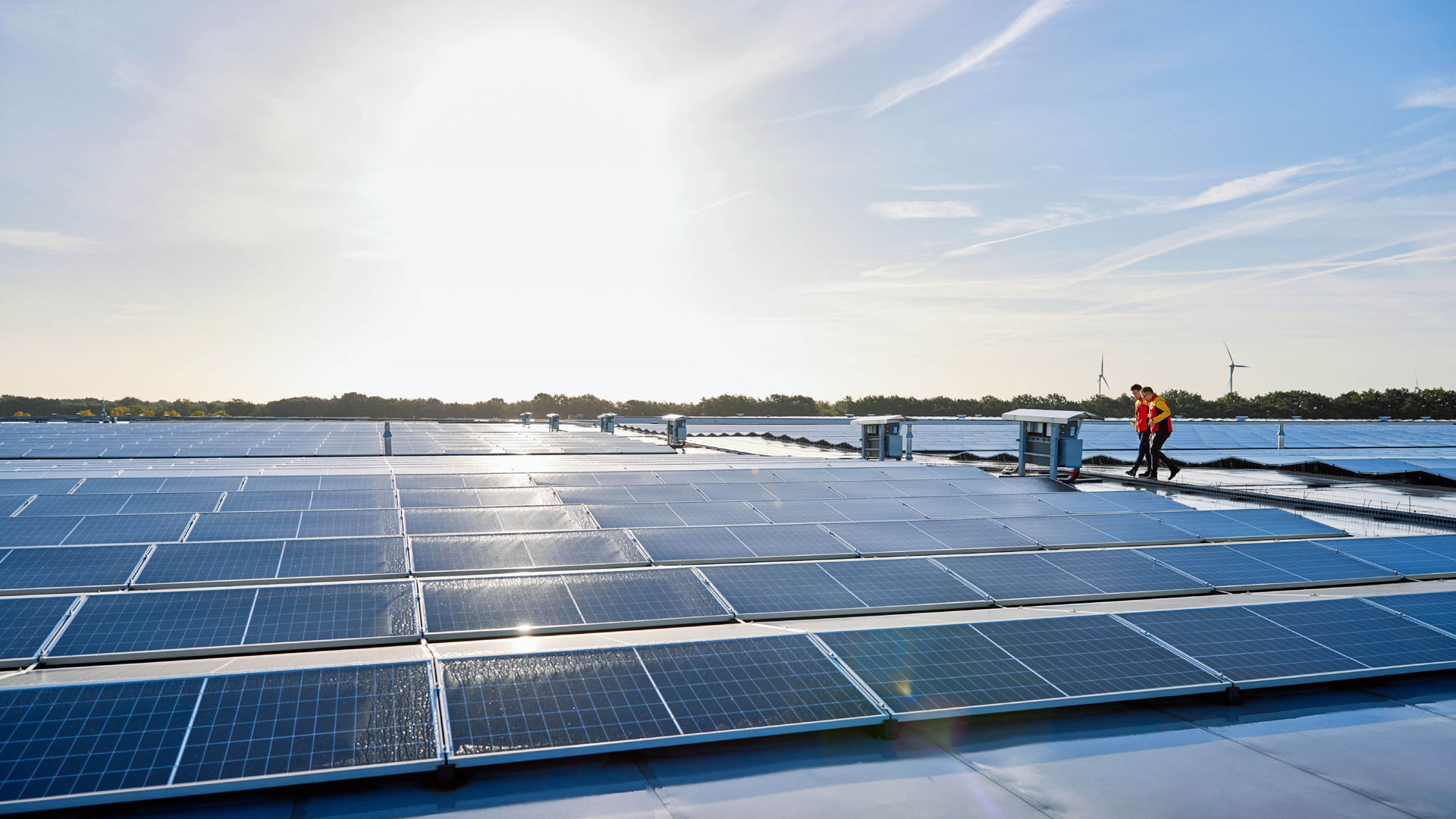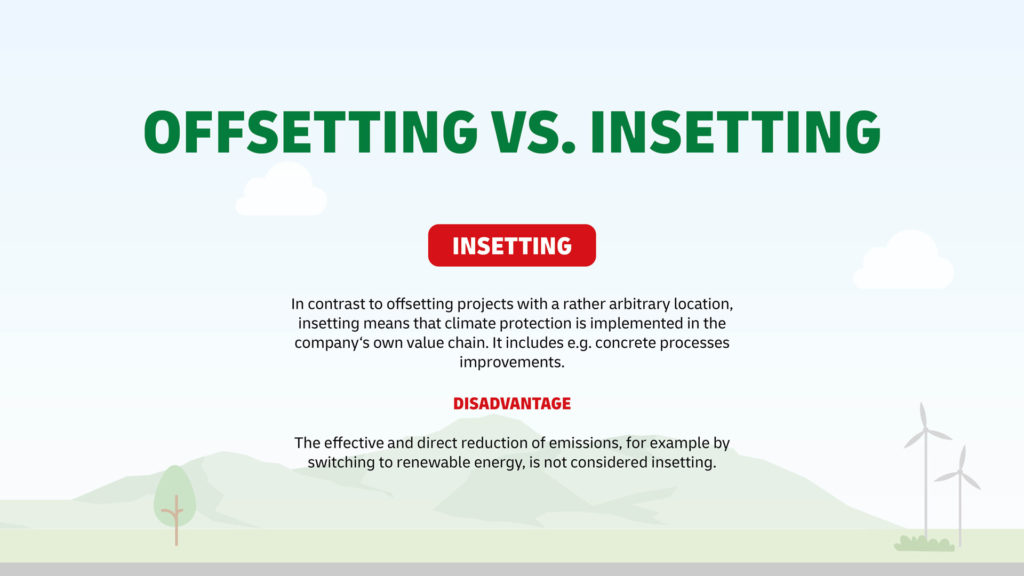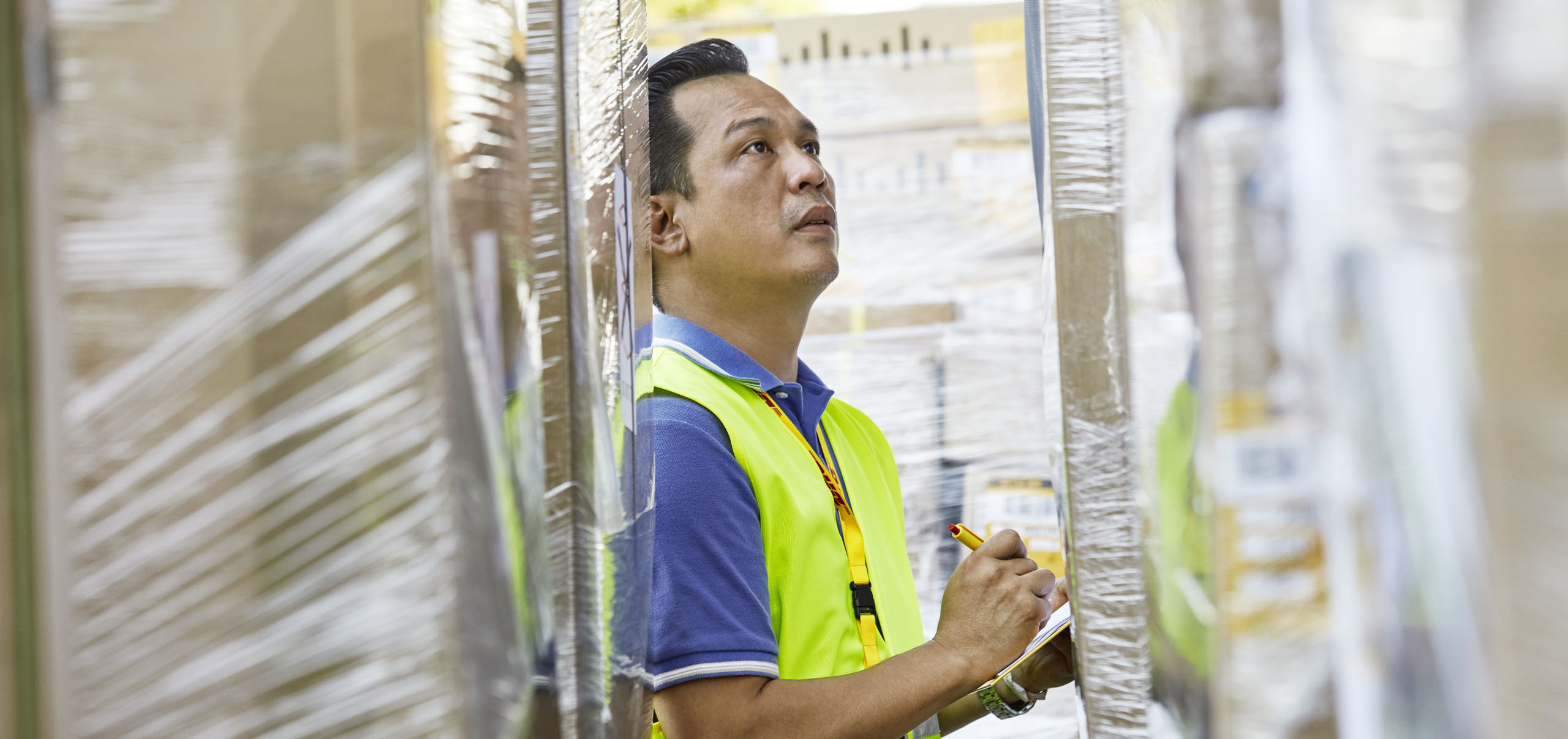
When it comes to sustainable logistics, many people think primarily of modern vehicle technology with zero-emission or at least emission-reduced drives, or of shifting transports to the eco-friendly railways. But the world of logistics is complex – and so are the options for the implementation of measures for sustainable logistics.
Sustainable Logistics: The Goal is Climate Neutrality
Energy consumption, emissions during transport and storage, and the inevitable packaging: these are the primary factors contributing to the overall ecobalance of logistics companies. Less consumption, fewer pollutant emissions, less packaging are therefore the steps to achieve a desirable and ideal goal: zero percent excess emissions in all logistics services.
Climate neutrality is a major challenge for every sector of the economy – but particularly so for logistics. As the backbone of modern economic life, it is indispensable. However, to keep supply chains running worldwide, warehousing, transport, and packaging logistics inherently require a great deal of energy. The more substantially we succeed in reducing energy consumption and pollutant emissions in the future, the greater the logistical contribution will be in the global fight against climate change.
Green Transport Technology
First things first: one of the main tasks of logistics is to get goods to their destination. Hence, the transport route offers significant potential for sustainability, which can be exploited via innovative green transport technologies. As a customer, you often cannot freely choose the means of transport, because circumstances such as the characteristics of the cargo or the route dictate a particular mode of transport. For this reason, it is essential that all types of freight – sea, air, road, and rail – are conducted as ecologically as possible.
On the overland route, shifting to rail is not always possible and in these cases the road is the only option for transport. This makes ecological drive technologies in the road freight sector all the more important. Whether full electrification or hydrogen solutions will be the technology of the future cannot yet be predicted. In terms of e-mobility, it is not enough for the vehicle itself to be emission-free. The electricity used must come exclusively from green sources to achieve zero emissions.

Until true zero-emission vehicles are available, sustainably oriented road freight logistics rely not only on battery-powered vehicles but also on bridge technologies such as bio-LNG or renewable synthetic diesel (HVO). Additional options for improving the sustainability of road freight include LHVs (Longer Heavier Vehicles), with their better load-to-drag ratio, and autonomous driving, which can streamline traffic flows.
Process Optimization, Coordination, and Standardization
Whether on the way or in the warehouse, optimized and better coordinated logistical processes make better use of storage and freight capacities. Even better than sustainably managed transportation is a trip that is not even necessary due to IT-supported planning – because freight capacities are fully utilized and outward and return runs are fully integrated into the process. This also helps to avoid empty runs. Empty runs are not only a nuisance with respect to environmental, but also to economic sustainability.
Digital networking is a prerequisite for optimized coordination. If all those involved in the process have constant, transparent access to all essential information, individual work steps can merge seamlessly and consume fewer resources. Another example of networking is a freight exchange. On such a platform, logistics providers share information about available freight capacities and delivery routes, and shippers can book these capacities. This improves capacity utilization and avoids many unnecessary trips.

Apart from coordination, standardization of processes and products can make logistics greener. Storage and freight volumes, materials, and also manpower: these resources are better exploited through standardization. As a result, logistics processes become both more efficient and more sustainable.
Sustainable Packaging
Shipping is not possible – and never will be – without adequate packaging. Sufficiently secure packaging is indispensable to protect the cargo. The more sensitive the goods, the more lavish the packaging. That is why you cannot always reduce the packaging and why sustainable packaging in logistics must start with the packaging material and the technology. The goals are:
- Producing as little waste as possible
- Reusing as much as possible
- Recycling everything that cannot be reused as far as possible
There is no such thing as sustainable packaging, there is always the optimum packaging for each specific use.
Winfried Batzke Managing Director German Packaging Institute
It is important that sustainable packaging does not compromise on the protection of goods – be it frozen goods or crystal glass. Methods and means of a sustainable packaging logistics are:
- Packaging made from recyclates and biomaterials (e.g., cardboard boxes made from green waste such as stems or leaves)
- Filling material from plant residues
- Reduced-volume packaging: less hollow space in the packaging unit means that more items can be placed in the transport vehicle. This also saves financial resources
- Concepts for reuse: the circulation of reusable containers can be optimized if the containers and boxes can be read out by auto-ID applications
Sustainable Paletts
Pallets are crucial for logistics, just as microchips are for the electrical industry. Pallets are both a means of transport and, in the case of certain goods, part of the packaging required for shipment. Pallets are standardized (just think of the EUR-pallet) and are shared by market participants as reusable pallets in an open pool.
Pallet and sustainability – do they go together? Yes: there are suppliers who repair pallets and return them to the market as used pallets. And if that is not possible, the pallets are recycled for the production of chipboards. So, the high-quality wood is not wasted. But even the joint use of pallets from the open pool can be made even more efficient – via networked digital pallet management, the existing stocks can be utilized in a better and more sustainable way.
Sustainable Warehouses
The third major pillar besides transport and packaging that can be streamlined ecologically is storage. And since pallets were just the topic: there is a broad palette of options in this field, too. Measures to improve the sustainability of warehouses and storage facilities include:
- Efficient and energy-saving heating, cooling, and other electrical systems: this is not only an ecological aspect – energy expenses are becoming an increasingly important cost factor
- Intelligent warehouse and space management to fully exploit capacities and save spare capacities
- Digital networking of delivery vehicles and warehouses for better planning of delivery and pick-up processes
- Coordination and optimization of the movement patterns in the warehouse
As in the other areas, greater efficiency contributes to environmental sustainability by saving valuable resources.
Ecological Compensation Measures
Ecological compensation measures mean that the amount of greenhouse gases emitted by the company is saved elsewhere. This only makes sense and has value if there is more than greenwashing involved and if you work together with recognized and reputable partners. Basically, there are two types of ecological compensation.
Offsetting
Unavoidable CO2 emissions are quantified with the help of specialized consultancies and software tools. The emissions calculated in this way are then offset via certified climate projects. That is, through projects that save exactly the amount of CO2 that theoretically equals the company’s own emissions. This often takes place at a distant location and has no direct impact on the company’s actual emissions volume.
Insetting
In contrast to offsetting projects with a rather arbitrary location for saving greenhouse gases, insetting means that climate protection is implemented in the company’s own value chain. This also includes concrete process improvements, for example to increase local biodiversity or the use of recyclable materials. Many of the steps already described in this article, such as the promotion of sustainable technologies, do therefore in a certain sense qualify as insetting measures. However, the effective and direct reduction of emissions, for example by switching to renewable energy, is not considered insetting.
Conclusion
In logistics, there are three business areas – storage, transport, and packaging – that are associated with high energy input. You can look at them as problem fields or in a completely different way: there are immense opportunities here to save resources, energy, and CO2 – and to actively help shaping the sustainable future.
Deutsche Post DHL Group and DHL Freight strive to be pioneers of the sustainable movement in logistics. That is why we are pursuing the ambitious goal of reducing all logistics-related emissions to zero by 2050 with our GoGreen program. If you would like to join us on this journey, we will be happy to assist you.






